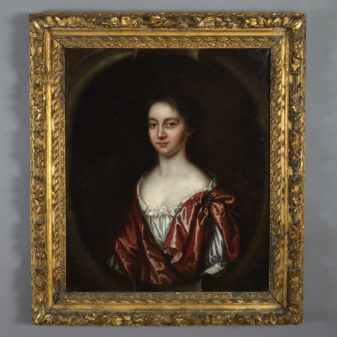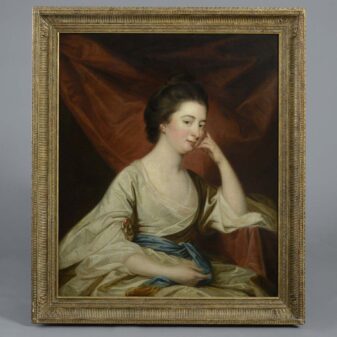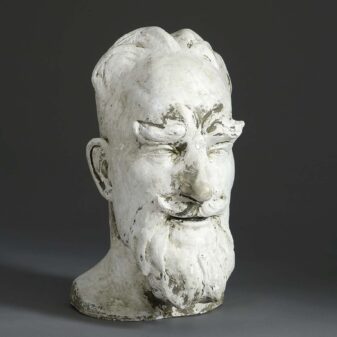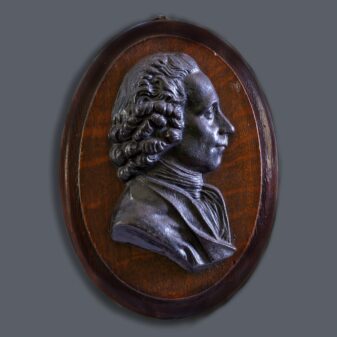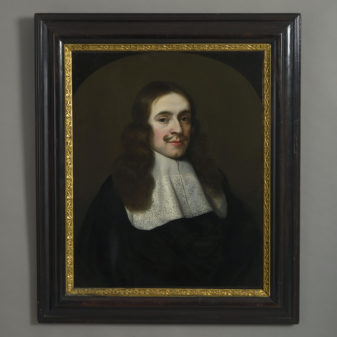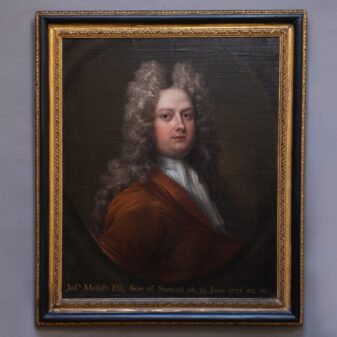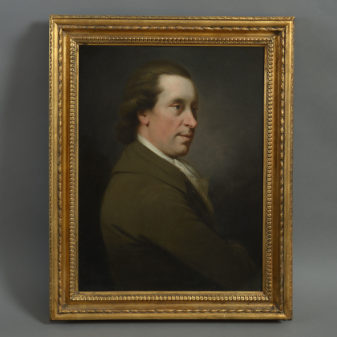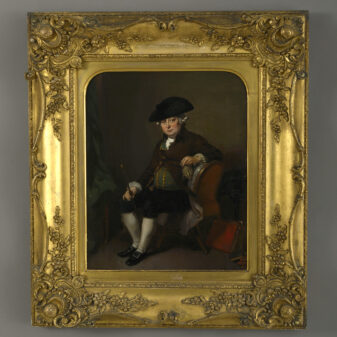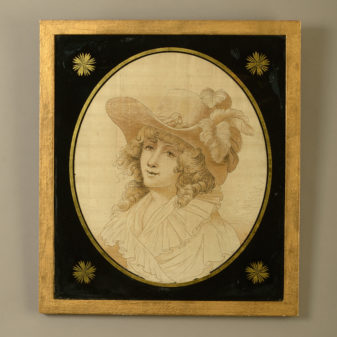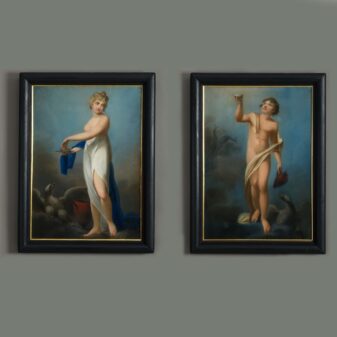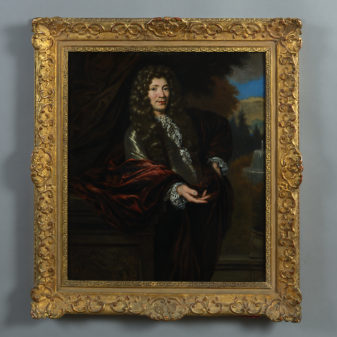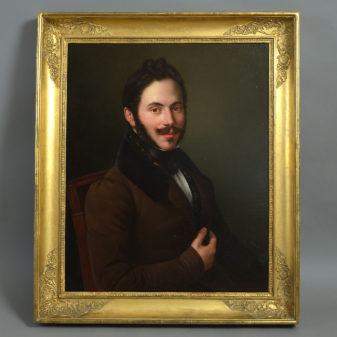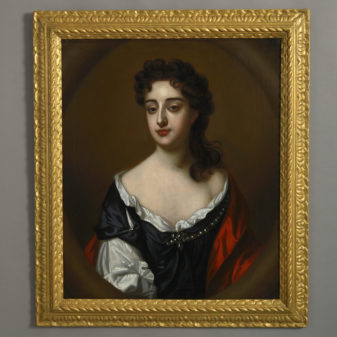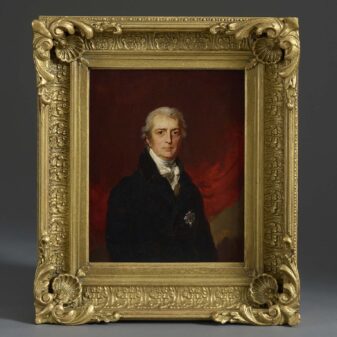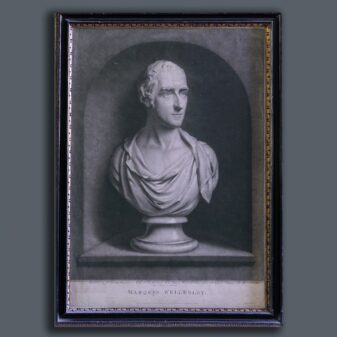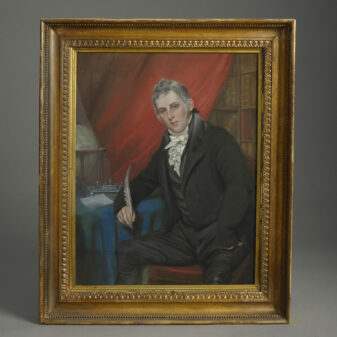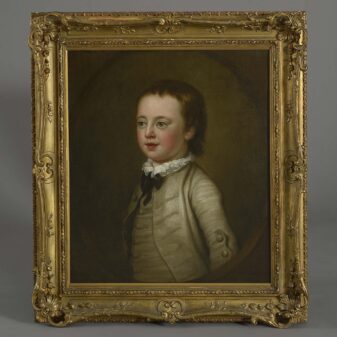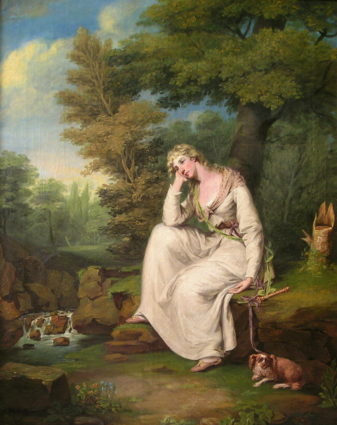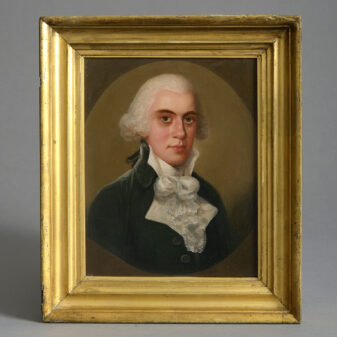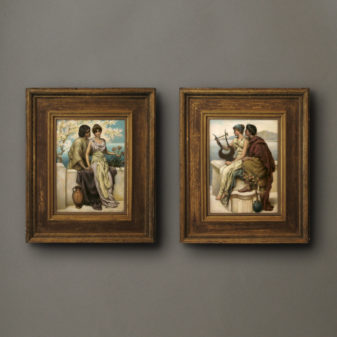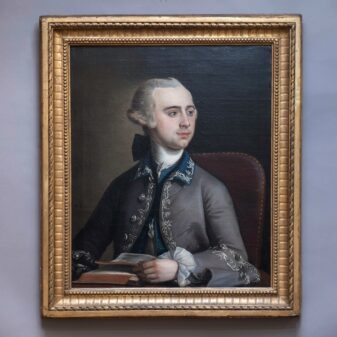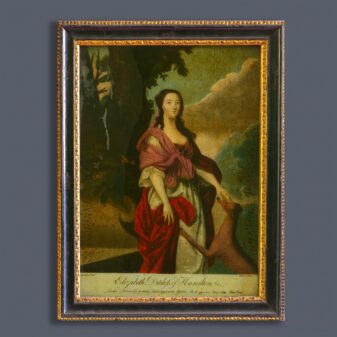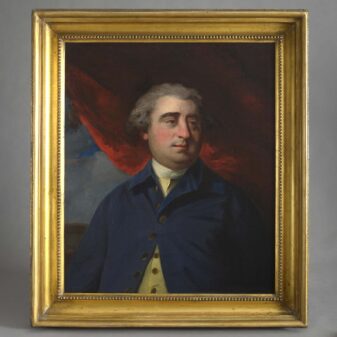Thomas Barber (1771-1843)
£9,800
SOLD
Colonel Sempronius Stretton (1781-1842)
Sempronius Stretton was born on 15th May, 1781, the eldest son of William Stretton (1755-1828) architect and antiquarian of Nottingham. He commenced his military career in April 1800 when he joined the Nottinghamshire Militia and in November entered the 6th Regiment of Foot at Chatham as an ensign. In April 1801 he took a lieutenancy in the 49th Regiment and shortly afterwards sailed for Quebec. He served under Colonel Isaac Brock as his aide-de-camp and during this time extensively recorded, through sketches, the indigenous population and burgeoning towns in rural Canada. In September 1806 he took a Captaincy in the 40th Regiment and returned to England.
In 1812 he sailed for Lisbon; his first engagement during the Peninsula campaign being Vittoria, on 21st June 1813, the battle that successfully ended the rule of Bonaparte’s eldest brother Joseph as King of Spain. He helped lead the regiment in numerous other battles during the passage of the Pyrenees and in July 1813, Stretton received the thanks of the Duke of Wellington for the gallant defence made by the 40th, under his command, supported by two Portuguese regiments, in defending the position on the heights before Pampeluna. For this he was awarded the Army Gold Medal and received the brevet rank of Major. He was present in successive engagements with the enemy until the end of the Peninsula campaign with the battle of Toulouse on 10th April 1814, and the abdication of Napoleon.
When the army withdrew from France in 1814, Stretton accompanied his regiment to America and nearly lost his life when shipwrecked off the coast of Ireland in Bantry Bay. From Cork, Stretton sailed for the Mississippi River arriving on 9th January 1815, just missing the Battle of New Orleans, the last major engagement of the ‘War of 1812’.
Returning to Portsmouth, the 40th then swiftly proceeded to Flanders, joining the army assembled near Brussels, in readiness for the Battle of Waterloo on 18th June 1815. As a commanding officer Stretton saw that the regiment held their ground against repeated attacks by French cavalry, infantry and guns, sometimes combined and sometimes separately. At times they were engaged by several columns of infantry at once, and were frequently surrounded by French cavalry, who became more and more desperate as the battle developed. Their position, some three hundred yards from the farm buildings of La Haie Sainte, was very exposed, particularly when the farm was eventually captured by the enemy. A French break-through in Wellington’s centre appeared imminent, but despite the ferocity and persistence of the infantry assaults, the constant and destructive cannonade of the enemy guns, and the fire of the French tirailleurs on the rising ground to their front, the Regiment yielded not a foot of ground. On the arrival of the Allies in Paris, the Duke of Wellington, in acknowledgment of Major Stretton’s services at Waterloo, appointed him commandant of the 5th Arrondissement, a position he held until the definitive treaty of peace was signed.
It is in this capacity that we see him in the portrait presented here. It is known that he returned from France to his family home Lenton Priory in Nottingham in the first half of 1816 and returned to Paris in August. Clearly it was during this period that he visited Thomas Barber’s local studio to sit for what is probably the artist’s best work. No doubt for this reason it was selected to be exhibited at the Royal Academy that year.
The following year Stretton was promoted brevet Lieutenant-Colonel for special services and later Colonel, retiring on half-pay in 1823. He was awarded the Army Gold medal for the battle of the Pyrenees, and the silver medal for Waterloo, both of which he proudly displays in this painting. Additionally he was made a Companion of the Order of the Bath, this being added later to the portrait together with the Military General Service medal, which he died before he could receive.
For many years, Stretton was a regular guest at the annual banquet given by the Duke of Wellington on the anniversary of the battle of Waterloo, and a portrait of him and all the other invitees is included in William Salter’s 1836 painting of ‘The Waterloo Banquet’ at Apsley House. Also the National Portrait Gallery in London has a small three quarter length portrait of Stretton which was painted in preparation for Salter’s painting. This portrait by Barber though is the best, presenting Stretton as a Major fresh from success at Waterloo, honoured by Wellington and confidently assisting in the military control of Napoleon’s captured capital city, presenting us with an image which is at once dashing, elegant and memorable.
Stretton married in March 1821 the Hon. Catherine William, who was elder daughter of General the Right Hon. Nathaniel William, second Baron Clarina. She died suddenly four months after their marriage and later in October 1830 he married secondly the Hon. Anne Handcock, youngest daughter of the second Lord Castlemaine.
Thomas Barber was a Nottingham based portrait painter who showed early enough promise to study in London and assist Sir Thomas Lawrence, whose influence is clear. Given his ability, he founded a successful practice, and exhibited steadily in London at the Royal Academy from 1810 until 1829. During the Regency he moved for a time to Derby thus offering comfortable families in the Midlands and North of England an elegant portrait style, in convenient surroundings, at a fraction of the cost of London painters, such as Lawrence.
(Framed size)




